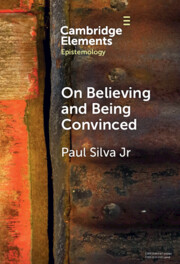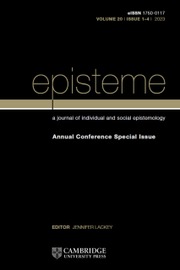On Believing and Being Convinced
Our doxastic states are our belief-like states, and these include outright doxastic states and degreed doxastic states. The former include believing that p, having the opinion that p, thinking that p, being sure that p, being certain that p, and doubting that p. The latter include degrees of confidence, credences, and perhaps some phenomenal states. But we also have conviction (being convinced simpliciter that p) and degrees of conviction (being more or less convinced that p). This Element shows: how and why all of the outright doxastic states mentioned above can be reduced to conviction thresholds; what degrees of conviction fundamentally are (degreed reliance-dispositions); why degrees of conviction are not credences; when suspending a belief is compatible with continuing to believe; and the surprising extent to which Kant endorsed the theory of conviction that emerges in this Element.
Product details
January 2025Hardback
9781009524148
78 pages
229 × 152 × 6 mm
0.249kg
Available
Table of Contents
- 1. Introduction
- 2. Conviction and its doxastic neighbourhood
- 3. Degrees of conviction and the reduction of outright states
- 4. The metaphysics of belief and degrees of conviction
- 5. The Sui generity of degrees of conviction
- 6. Belief-suspension compatibilism
- 7. Was Kant a Kantian about doxastic states? (by Christopher Benzenberg)
- References.



